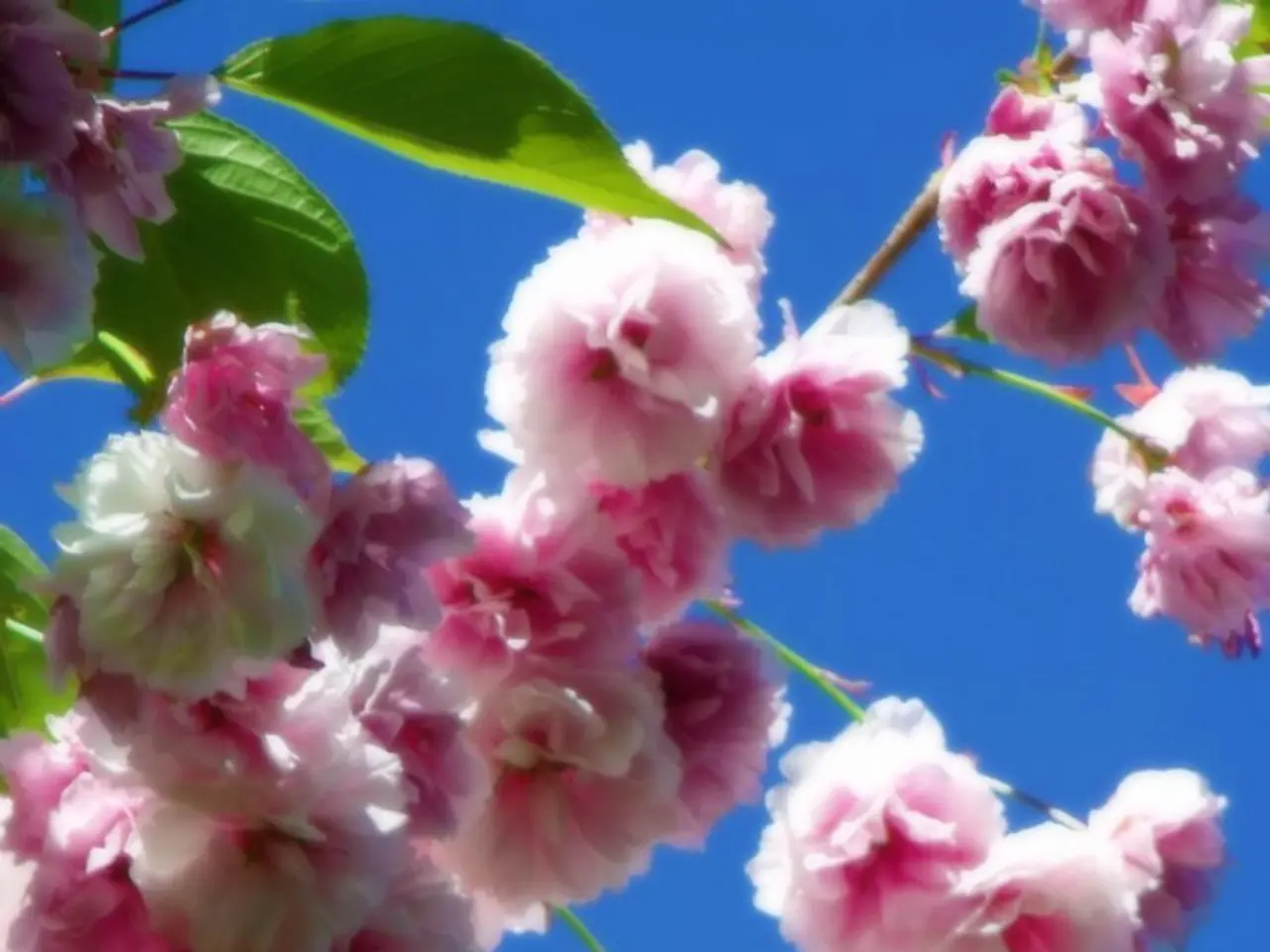Harmony: Hue, Mass, and Angle
In a captivating virtual workshop, Mitsuko Osuga from Mitsuko Floral will guide you through the basics of Japanese flower arrangement, also known as Ikebana. This ancient art form emphasizes simplicity, asymmetry, and harmony, offering a unique contrast to Western floral design.
During the workshop, you'll learn to create a one-of-a-kind arrangement inspired by spring. The arrangement process begins with the selection of natural materials such as branches, leaves, flowers, and sometimes grasses or reeds. Emphasis is placed not only on blossoms but also on stems and leaves, with the negative space and lines they create being equally important.
You'll be encouraged to find some loose branches in your yard to incorporate this thought into your arrangement. Seasonal and local plants are traditionally preferred, emphasizing a connection with nature and time.
The arrangement's asymmetrical look and balance will be refined by inserting filler branches and twigs in Step 7. To start, in Step 4, participants are instructed to cut the "heavier" flower (roses) to have about two inches of stem under the flower head and insert it into the squares of the grid through the greenery, keeping the flower bloom facing up. In contrast, in Step 5, participants should take the second "lighter" flower (tulips), trim the bottom, insert it into a square grid from the side at an angle, and let it naturally fall towards the working table, face down.
In Step 6, participants are advised to rearrange their tulips to ensure they flow downwards, as this line is the part of the plant that is growing towards the earth, creating a complementary balance with the roses facing up towards the sun. Tulip heads can droop initially as they bloom during the day and close at night; their necks will naturally grow towards the light and change direction in just a day or two.
Pro Tip: A thin, 1⁄4" vertical slit in the neck of the tulip (the stem right under the bloom) can be made to make tulips last even longer.
Vessel selection plays a crucial role in Ikebana. Use simple, often shallow vessels such as wide, shallow dishes (as seen in the moribana style) or tall narrow vases depending on the style. The vessel should harmonize with the arrangement, often in muted or natural tones, allowing the plant materials to stand out. A device called a kenzan (a spiked metal flower holder) is commonly used inside the vessel to hold branches and flowers firmly in place.
The final arrangement should be observed daily to notice the subtle changes as the flowers continue to bloom and transform, taking on new directions and shapes. Practicing mindfulness and respect for the materials is essential, as ikebana is traditionally considered not just an art but a spiritual practice that trains the mind and soul.
Join Mitsuko Osuga in this enlightening virtual workshop and immerse yourself in the world of Japanese flower arrangement. With over 25 years of professional experience in Tokyo, New York City, and Los Angeles, Mitsuko Osuga, the owner and chief designer of Mitsuko Floral, is a master floral designer who will share her expertise and passion for Ikebana with you.
The workshop requires simple materials such as a shallow plate or cereal bowl, scissors, cellophane tape, two types of flowers, greenery, and simple branches and twigs. Copper penny can be added to the water to prevent the growth of bacteria and extend the life of the flowers. Vessels with wide and open necks are preferred as it is believed that oxygen can more readily reach the stems.
[1] Ikenobo, Ohara, Sougetsu ( Schools of Ikebana) [2] Japanese-Inspired Flower Arrangement: A Guide to Ikebana (Book) [3] The Art of Ikebana: The Way of Flowers (Book) [4] Ikebana Techniques: A Comprehensive Guide (Book)
- Mitsuko Osuga's virtual workshop delves into more than just Japanese flower arrangement, it offers insights into the spiritual practice of Ikebana, a tradition that cultivates mindfulness and respect for its materials.
- Akin to the principles of Japanese fashion-and-beauty and food-and-drink, Ikebana emphasizes simplicity, asymmetry, and harmony, providing a distinct contrast to Western floral design.
- The art of Ikebana incorporates various elements, such as ramen noodles and tea, symbolizing the broader influence of Japanese lifestyle on modern culture.
- Home-and-garden enthusiasts may find inspiration in the elegant design principles of Ikebana, as these principles can be applied to arranging indoor plants and decorative items.
- For those interested in education-and-self-development, surely delving into the ancient art of Japanese flower arrangement will spark creativity, cultivate focus, and promote a deeper appreciation for the wonders of nature.







